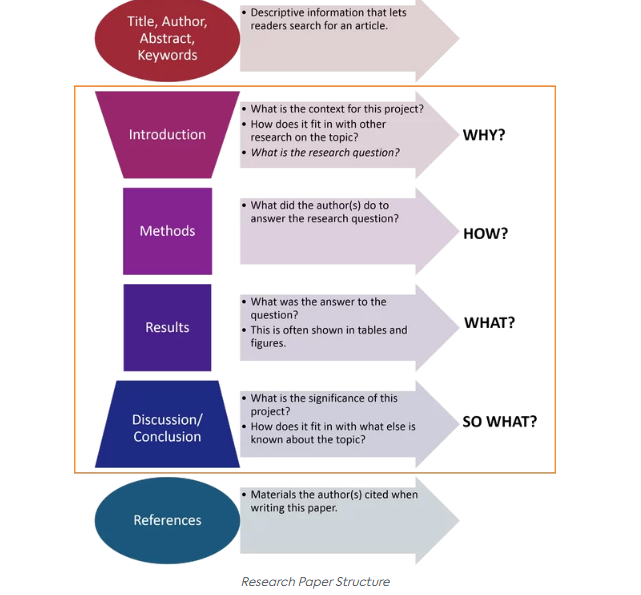How to Write a Research Paper
The Main Structure of Writing a Research Paper

Writing a research paper is a systematic and formal process that requires careful planning, thorough research, and precise articulation of ideas. Whether you are a student, scholar, or professional, understanding the main structure of a research paper is essential to communicate your findings effectively. A well-structured research paper not only reflects the depth of your study but also demonstrates your ability to present complex information clearly. In this extended guide, we will explore the essential components of a research paper and provide insights into how to structure each section professionally.
1. Title Page
The title page is the first element of your research paper that readers will encounter. It should include the title of your research, your name, institutional affiliation, and the date of submission. A concise yet descriptive title is critical as it gives the reader a clear idea of the research topic and scope. For example, instead of a vague title like “Climate Change,” a more specific one like “The Impact of Climate Change on Coastal Ecosystems in the Southeast United States” is preferred.
- Key Elements:
- Title of the paper
- Author(s) name(s)
- Institutional affiliation
- Course details (if applicable)
- Date of submission
2. Abstract
The abstract is a succinct summary of your research paper, typically 150-250 words in length. It highlights the main objectives, methods, results, and conclusions of the research. Though brief, the abstract plays a critical role as it allows readers to quickly understand the essence of your paper. It should be written in a clear and coherent manner, devoid of jargon, and should not contain citations.
- Key Elements:
- Research problem
- Purpose of the study
- Brief methodology
- Key findings
- Conclusion and implications
3. Introduction
The introduction sets the stage for your research paper. It provides the background information, states the research problem, and outlines the paper’s objectives. A strong introduction is essential to grab the reader’s attention and convey the relevance of the research. It typically follows the funnel approach, starting with broad background information before narrowing down to specific issues or hypotheses.
- Key Elements:
- Context and background
- Research problem or question
- Purpose and significance of the study
- Research objectives or hypotheses
- Overview of the structure of the paper
4. Literature Review
The literature review section synthesizes existing research related to your topic. It demonstrates your understanding of the current knowledge in the field and highlights gaps that your study seeks to fill. Rather than merely summarizing previous works, a literature review should critically analyze and evaluate them in the context of your research question. This section provides the theoretical foundation for your study and should be organized logically.
- Key Elements:
- Summary of relevant studies
- Critical evaluation of prior research
- Identification of research gaps
- Justification for your study
5. Methodology
The methodology section explains how the research was conducted. It should provide enough detail for another researcher to replicate the study. Depending on the type of research (qualitative, quantitative, or mixed methods), this section will differ but must include a description of the research design, sampling techniques, data collection methods, and analytical tools. Transparency in your methodology enhances the credibility and reproducibility of your findings.
- Key Elements:
- Research design (qualitative, quantitative, or mixed)
- Data collection methods (surveys, interviews, experiments, etc.)
- Sampling strategy (random sampling, convenience sampling, etc.)
- Analytical methods (statistical tests, thematic analysis, etc.)
- Ethical considerations (if applicable)
6. Results
The results section presents the findings of your research without interpretation. For quantitative studies, this may include statistical data, tables, and figures. In qualitative studies, it may involve thematic descriptions and quotations from participants. The presentation should be clear and logical, highlighting the most significant findings in relation to your research questions.
- Key Elements:
- Presentation of data (quantitative or qualitative)
- Use of tables, figures, and charts (if applicable)
- Objective reporting of findings
7. Discussion
The discussion section interprets the results and relates them back to the research questions or hypotheses. This is where you explain the significance of your findings, how they compare with previous research, and what they imply for theory, practice, or future studies. The discussion should acknowledge any limitations of the study and suggest areas for further investigation.
- Key Elements:
- Interpretation of results
- Comparison with previous studies
- Theoretical and practical implications
- Study limitations
- Suggestions for future research
8. Conclusion
The conclusion section summarizes the key findings of the research and reinforces the significance of the study. It should not introduce new information but should instead provide a concise reflection on how the research objectives were achieved. The conclusion may also offer final thoughts on the broader implications of the work and how it contributes to the field.
- Key Elements:
- Restatement of main findings
- Reinforcement of research significance
- Final thoughts and contributions to the field
9. References
The reference section lists all the sources cited in your research paper. It should follow a specific citation style, such as APA, MLA, or Chicago, depending on the field of study. Proper citation not only gives credit to original authors but also enhances the credibility of your research. Ensure that your reference list is comprehensive and accurately formatted.
- Key Elements:
- Consistent citation format (APA, MLA, Chicago, etc.)
- Inclusion of all cited works
- Accuracy in details (author names, publication dates, titles)
10. Appendices (Optional)
The appendix is an optional section used to provide supplementary material that is not essential to the body of the paper but adds value. This may include raw data, questionnaires, or detailed descriptions of methods that would otherwise clutter the main text.
- Key Elements:
- Supplementary data or information
- Survey instruments or tools
- Extended methodologies or descriptions
The following figure show the structure of a research paper

For more understanding about research paper writing, please take a look the attached videos

